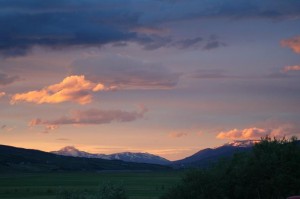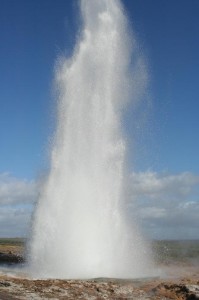Five words from the blurb: Iceland, murder, lover, remote, family
Burial Rites is an atmospheric story set in Iceland during the 19th century. The book is based upon real events and tells the story of Agnes Magnusdottir, a women sentenced to death for murdering two men. There were no prisons on Iceland at this time so Agnes is sent to live on a remote farm, but the family are unhappy to have a criminal in their midst. Even the presence of a young priest, instructed to help Agnes mentally prepare for death, does not reassure them. But over time the family begin to bond with Agnes and the truth about her actions are slowly revealed.
The story itself is quite simple, but the author manages to make it gripping throughout. Details of family life in this harsh, isolated environment add to the book’s appeal:
Steina Jonsdottir was piling dried dung in the yard outside her family’s turf croft when she heard the rapid clop of horses’ hooves. Rubbing mud off her skirts, she stood and peered around the side of the hovel to better see the riding track that ran through the valley. A man in a bright red coat was approaching. She watched him turn towards the farm and, fighting a flicker of panic at the realisation she would have to greet him, retreated back around the croft, where she hurriedly spat on her hands to clean them and wiped her nose on her sleeve.
Burial Rites could be described as crime fiction as there is a gruesome mystery at its heart, but I think the book will have greater appeal to fans of literary fiction who will appreciate the clever structure and emotional depth.
My only criticism is that the novel failed to capture the Icelandic mindset. When reading this book amongst many other Icelandic ones it stood out as different. The countryside and their living conditions appeared to be well researched and accurate, but the thoughts and actions of the characters often felt wrong. Many subtle aspects of their culture were missing, including their unique independence, and without reference to Icelandic names and places it could easily have been set in any Western country. This is unlikely to detract from most reader’s enjoyment of the book, but is something I found a little disappointing.
If you enjoy literary fiction with historical elements then you’ll love this compelling, atmospheric read. I’m sure people will particularly enjoy its originality, but be prepared for an emotional roller-coaster!

.
The thoughts of other bloggers:
Kent writes with an artist’s hand, crafting her story meticulously. S Krishna’s Books
…at times so entrancing it is almost hypnotic. Cerebral Girl
It’s original without being gimmicky, poetic without being overdone. The Incredible Rambling Elimy





















